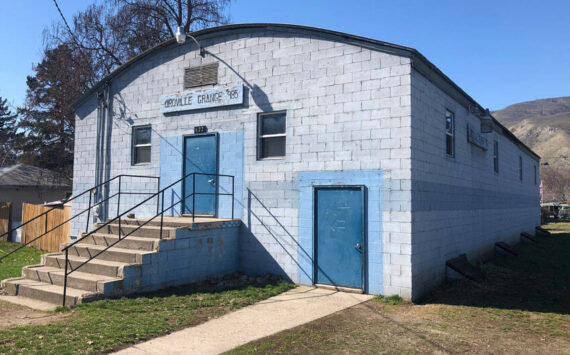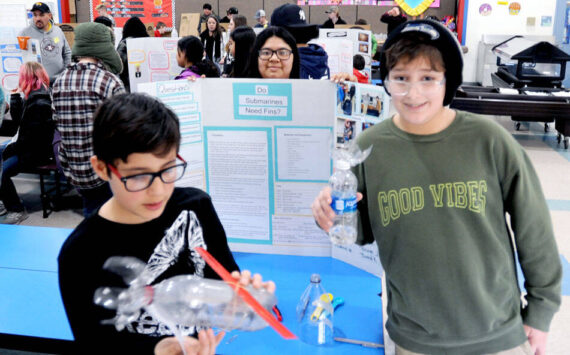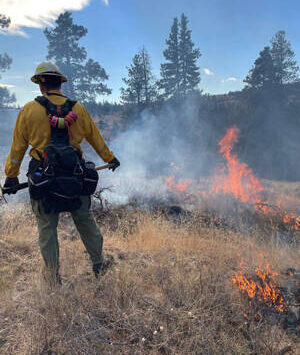OROVILLE – It was thought the Oroville Elementary building had the roof in most need of repair, but a recent survey of the district’s facilities shows the high school roof is just as bad if not worse.
Larry Lehrke with Tremco Roofing made the survey of the roofs and presented his findings to the Oroville School Board and several board members-elect at their Monday, Nov. 28 meeting. Lehrke described a patchwork of several types and ages of roofing materials, improper repairs and years of lack of proper maintenance. He said this has caused serious problems with the roof on both facilities.
“This has led to moisture inside the roof system which is a good incubator for mold and rot which can make the roofs unsafe,” Lehrke explained to the board.
He also said improper repair or lack of repair had left large sections of roof coverings vulnerable to being blown off by the wind. Old skylights he believed were not properly covered by three-quarter inch plywood could also lead to safety issues with people falling through them. Wooden, instead of metal panels, badly repaired coping caps and improperly flashed vents and conduits can lead to moisture getting into the roof system, he said.
While there were some areas of the roof that were covered with newer shingles that were in good shape, especially at the elementary building, there was also some of the roofing material that tested positive for asbestos which he said would need to be abated. In areas that had been sprayed with polyfoam he said the material was popping in some places and in others the outside layer was coming off exposing it to UV light which allows the inner foam to deteriorate. Some areas on the high school also had pooling water due to plugged drains or improper slope. The weight of this water puts strain on the roof system, he explained.
He recommended the roofs, each about 76,000 square feet, be replaced with a three-layer, sloped system to protect the roof system and properly drain moisture. He also recommended any existing wood paneling be replaced with metal panelling which he said would help to anchor the new roof system.
He said an estimated “worst-case scenario” budget for replacing the elementary roof would be $1.1 million and for the high school it would be $1.5 million. The multi-ply, gravel surface material he recommended to the board has a 30-year warranty and would have an R30 rating for insulation. Other materials like single-single layer roofing have shorter warrantees, between 10 and 15 years.
“Single layer is easier to repair, but it also damages more easily,” he said.
Jeff Soehren, a specialist in school facilities with the North Central Washington Educational Services District is working with a group of volunteers studying Oroville’s school facilities. He is also looking at ways to finance repairs and remodeling. He told the board he had surveyed the facilities and that Oroville’s elementary school building scored low, 27 out of a possible 100 points.
“The bad news is the score is low, the good news is the score is low. The state looks at funding those schools with the lowest scores,” he said.
Soehren said the elementary had about $2.2 million in priorities, the high school $1.6 to $1.9 million and the bus garage $121,000 to $194,000.
“I was surprised, both schools interiors are good regarding fit and finish, the interiors behind the walls are dubious and the exteriors are not as good,” he said.
He suggested the district consider looking at a pair of six-year capital improvement bonds that would stabilize the buildings through re-roofing, upgrades and maintenance. He also suggested that the district schedule the Maintenance and Operations Levies so they don’t correspond with the same time the voters are being asked to approve the bonds. By going with the shorter, six-year capital improvement bonds the district would be able to get to the year 2024 when it is eligible for more state funding that could be used for a larger 30-year bond to make major improvements to the facilities. The six-year bonds need a simple 50 percent majority like the M&O Levy, while the longer term capital improvement bonds need 60 percent approval.
In the survey of facilities, in addition to roof repair for the elementary school, Soehren had several improvements and their estimated costs listed in the project summery. These included a new kitchen and cafeteria, restroom upgrades, technology, parking drop off upgrades, exterior paint and window upgrades.
School Superintendent Steve Quick will speaking at the Oroville Chamber of Commerce meeting on Thursday, Dec. 8 to discuss the upcoming levy and possible school facilities improvements strategies.







